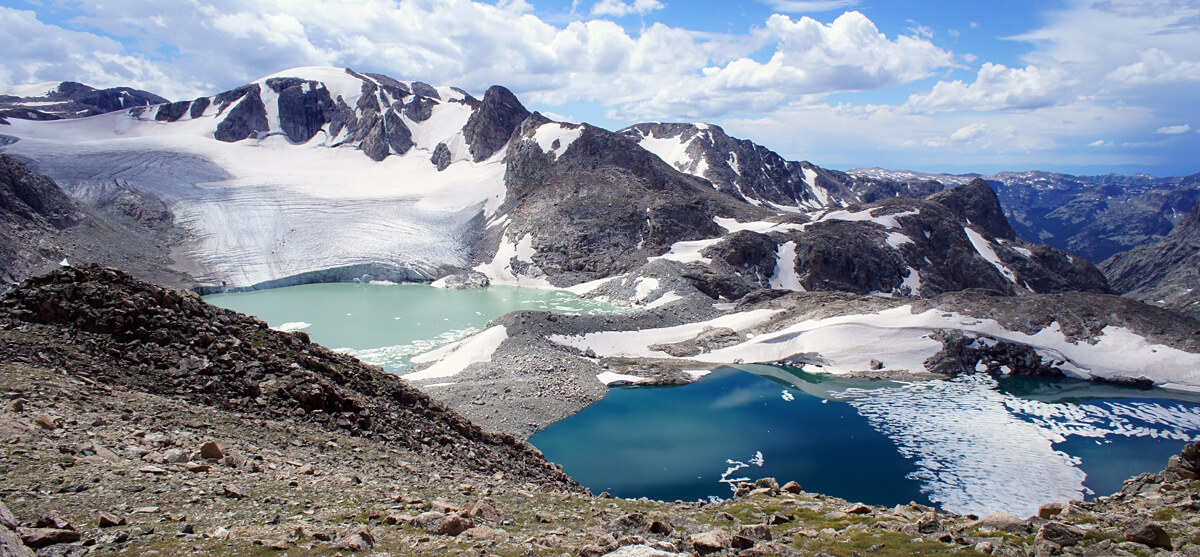Table of Contents
Weathering Forces
Under this head are grouped a number of agencies that have their origin in the atmosphere, and which work not only on the surface but as far down as air and water, heat and cold, can penetrate. Because these forces work invisibly, they are apt to be more or less overlooked, although the results of their activity are to break up, decay, and at last pulverize the solid rock, thus preparing it for transportation by running water, wind, ice, and waves.
Mechanical Action
The air is constantly moving dust and sand over the surface of the earth, and this, in the course of ages, accounts for a considerable distribution of material. The general tendency must be downward through the air, although in some cases, as in the case of sand dunes and coral islands, the wind drives some of the material to higher levels.
In dry climates, sand driven by wind acts as a sand-blast when it strikes rock surfaces. The rock is slowly cut by this means, and in time, the results are considerable.
Heat and cold are the most destructive agencies of a mechanical kind. Rocks are broken by the changes of temperature at the surface, in the same way as glass is, when cold water drops on hot glass, or hot water on cold glass; the unequal contraction or expansion cracks the material. The sun shining on a rocky surface may heat it to a high temperature, if the conditions are favorable; and since rock is a poor conductor of heat, the surface becomes hot while the rest of the rock stays cool; the expansion of the surface then causes it to shell off. This effect can be seen on boulders and on cliffs and rocky peaks.
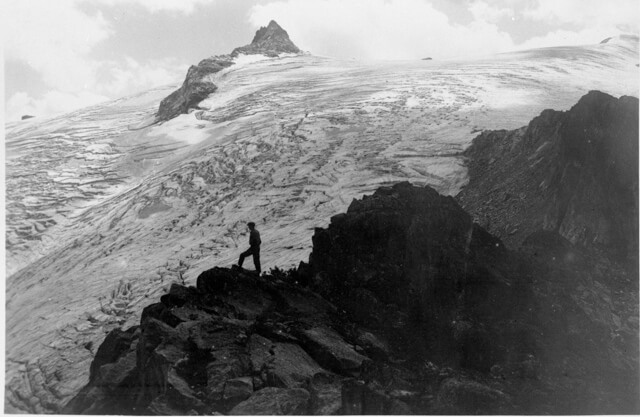
Dark-colored rocks are more strongly heated than the light-colored ones. The effect is greatest in dry climates, and at such latitudes or elevations that there is a considerable fall of temperature at night, when the shrinking of the heated surface is equally destructive. In the case of exposed rocky peaks, the effect of this alternate heating and cooling is to extend the joints, and to develop new cracks, so that the rock is finally broken up into blocks. High mountain peaks are almost always covered with broken rock. Cliffs and steep, rocky, mountainsides have a sloping heap of broken rock, a talus, sometimes of great extent, particularly on the south side.
While crystalline rocks, on account of their uneven, mixed texture, suffer more than such sedimentary rocks as limestone and sandstone, thin layers of the latter are sometimes buckled up and broken by a hot sun. In cold climates, or at high levels, the freezing of water in cracks and pores causes a great deal of rock destruction.
Chemical Action
The destructive effects of chemical weathering are more apt to be overlooked than those caused by mechanical action. The chemical effects are due to the presence in the atmosphere of carbonic acid (carbon dioxide) and oxygen, which are continually being brought into contact with the rocks, by dissolving in rainwater and other water. Water is favorable to the activity of these substances, and they are therefore more destructive in moist than in dry climates.
Action of Carbonic Acid
Lime, potash, soda, and iron are present more or less in all rocks; they form a part of such common rock- forming minerals as feldspar, mica, hornblende, and pyroxene. The carbonic acid of the atmosphere combines with these substances to form carbonates, which dissolve in water and are carried into the rivers, lakes, and oceans. This leaves the rocks in a loose condition at the surface, which is thus continually wasting away, a part disappearing into rivers, etc., and a part remaining as loose material on the surface.
Action of Oxygen
Oxygen works on rocks that contain certain iron compounds, converting these into limonite; this loosens the structure and prepares the rock to be washed away by running water. Sulphides, such as pyrite and copper pyrites are in this way converted into gossan or iron capping. But any rock high in iron may acquire a rusty capping by oxidation.
Chemical weathering is most active in the joints of rocks and on sharp points and edges, resulting in the widening of the joints and the rounding of edges. Loose, angular blocks are thus rounded, and rock with vertical joints is worn in to pillars or columns.
General Effects of Weathering
The weathering forces, working on the rocky surface of the earth, slowly cover it with a mantle of rock debris, the pieces becoming gradually smaller through the continued work of heat and cold and the dissolving action of carbonic acid. ln favorable situations, this mantle may lie thick enough to protect the underlying rock from heat and cold, but on slopes or cliffs, it is continually washed away. This accounts for the V shape of old river valleys, the walls of which would remain perpendicular, if it were not for weathering. Terraces or benches are, in some cases, caused by the resistance of certain layers of rock to the weathering process. In Canada, the results of weathering cannot be seen as extensively as in countries that have not been glaciated. In unglaciated countries, the loose covering left in place is sometimes many hundreds of feet in depth.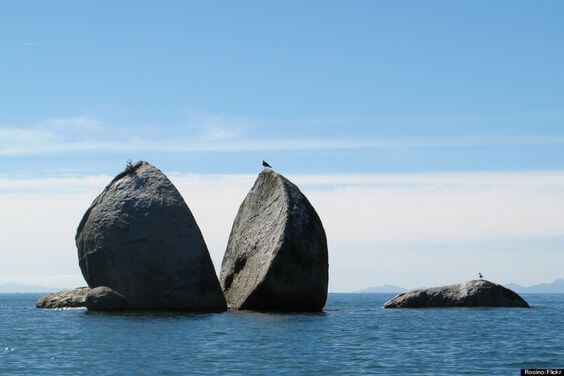
Deep weathering.—The active constituents of the air are carried down by rain into the rock joints, cracks, and pores, and may penetrate to great depths; thus the decay of rock is not confined to the surface. It is estimated that the cracks and pores in rock are sufficient to hold, on the average, a quantity of water amounting to from 2½% to 5% of the bulk of the rock. The groundwater dissolves out of the rocks such substances as salt and gypsum; and with the aid of carbonic acid, it dissolves limestone. In a limestone country, this action may go on so extensively as to form caves. When the roofs of limestone caves are weakened by continued loss in this way, they sometimes fall in, forming the sink-holes common in limestone districts.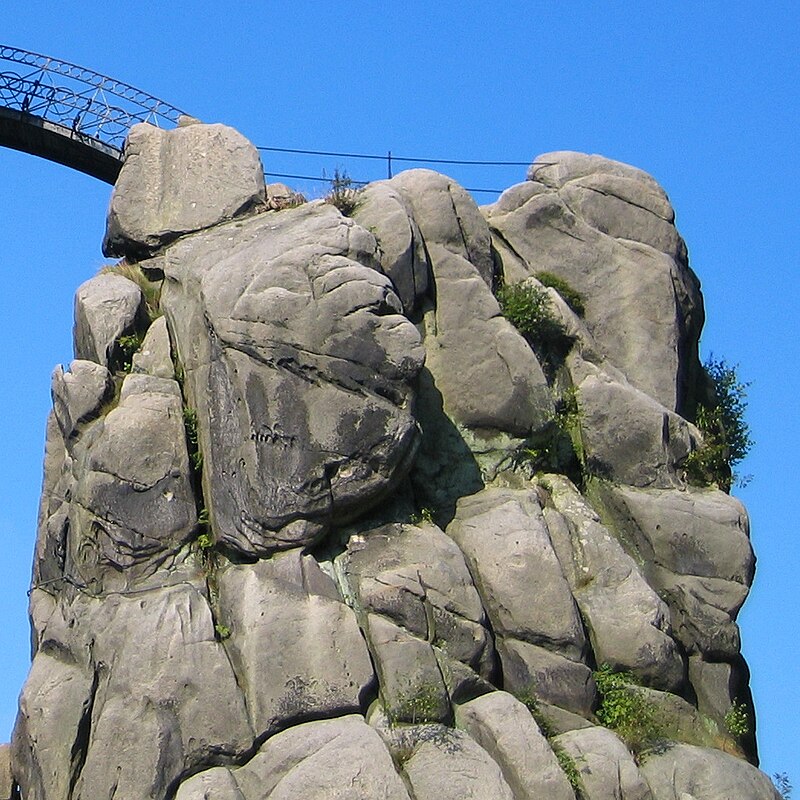
The circulating ground-water may replace some substances by others; as when the substance of a piece of wood is slowly carried away and silica is deposited in its place, forming petrified wood. The structure of this petrified wood is still visible, although its substance is completely changed. The water sometimes carries a valuable mineral that it puts in place of that which it removes, which accounts perhaps, for the occurrence of some deposits of zinc and lead ores in limestone.
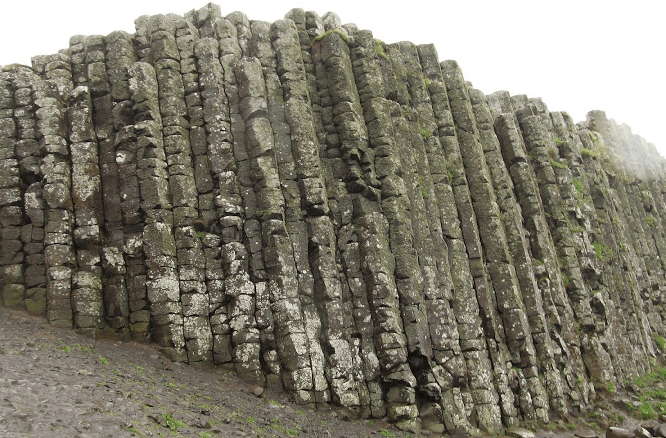
Veins are thought to be sometimes formed by the deposition of minerals in cracks, into which the ground-water flows.
Stalactites are icicle-like deposits, usually of calcite, hanging from the roofs of caves. The water, dripping from the roof and evaporating, deposits part of the carbonate of lime that it carries in solution; this hardens and forms the stalactite. In a similar manner, water dropping on the floor of the cave builds up a stalagmite. The two actions may go on until the two meet and form a pillar.
General Results of Weathering
While the ground water does a certain amount of building up in the form of veins, etc., the net result of its work is to loosen the rock, and to carry away a large amount of material in solution. As a great part of the water at length finds its way into rivers, and from thence into the oceans, it is plain that the general effect is to lower the land-level. It is estimated that the Mississippi River carries into the Gulf of Mexico annually nearly 113 million tons of dissolved matter, about half of which is carbonate of lime.

